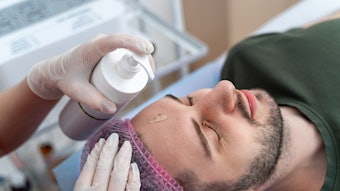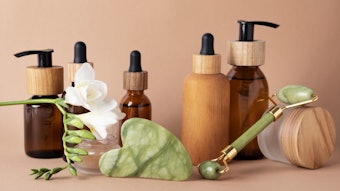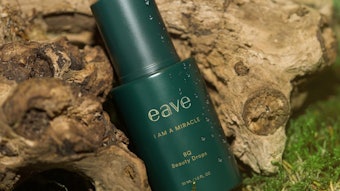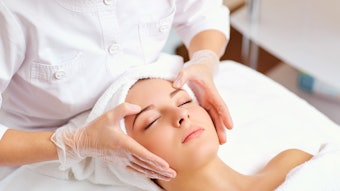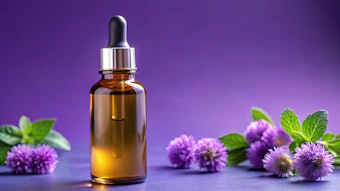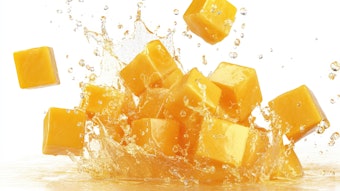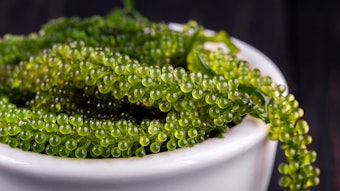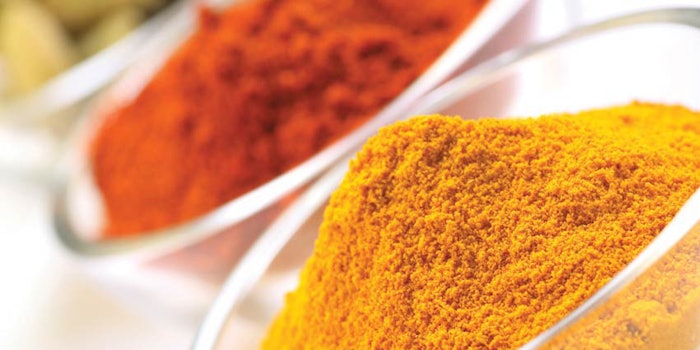
Herbs and spices have been used throughout history to preserve foods, add flavor to dishes, heal internal ailments, and scent lotions and perfumes. In fact, their use dates back to the early Egyptians who primarily used them as natural medicinal remedies. Because herbs and spices were so powerful in healing the body, it didn’t take long for ancient civilizations to begin using them to care for their skin.
The benefits of herbs and spices like turmeric, cinnamon, rosemary and oregano transcend well beyond the body. When used appropriately in the treatment room or applied topically as part of a home care regimen, they can revitalize skin cells, treat hyperpigmentation, detoxify and stimulate circulation and regeneration. Clients also love the inviting aroma herbs and spices deliver. The key to effectively using these ingredients in the treatment room is understanding the primary differences between each, the results each has the potential to provide, and how best to unlock that potential to bring about change to clients’ skin.
Herbs vs. Spices
First, it’s important to delineate between herbs and spices. Herbs are the fresh and dried leaves generally of temperate plants, whereas spices come from the flowers, fruit, seeds, bark and roots typically of tropical or exotic plants. Of course, it is possible for one plant to provide both an herb and a spice. For example, the plant Coriandrum sativum produces the herb cilantro from its leaves and the spice coriander from its seed.
In skin care, herbs tend to be used to soften and digest cells and provide antibacterial, antiseptic and antiviral properties. Spices, on the other hand, deliver powerful antioxidant support, improve circulation, promote healing and stimulate cells. That said, there are some properties herbs and spices share such as anti-inflammatory, antifungal and immune boosting benefits. Both are found in skin care products ranging from cleansers to enzymes, and peels to masks and healing balms.
Spices for Skin
Some of the earliest uses of spices for healing purposes have been traced back to Ayurvedic medicine, one of the world’s oldest holistic healing systems developed in India more than 3,000 years ago.1 While there are numerous spices that have proven effective in skin care, here are four powerhouses to consider integrating into the treatment room.
Clove (Eugenia caryophyllus)
Primarily used as a natural anesthetic and antiseptic stimulant, clove has been cultivated the world over for more than 2,000 years. The oil has long been used in Chinese medicine for detoxification and to stimulate the circulatory system. Its aroma also helps to stimulate the mind. Clove’s antiseptic, antimicrobial and antibacterial properties make it ideal for the treatment of acne, as it supports with reducing inflammation, purifying and removing impurities.
When clove is combined with L-lactic acid and other spices like cinnamon and ginger in enzymes and cleansers, it naturally reduces lipids and provides nutrition to the skin. It is also rich in antioxidants, vitamins A and C, and minerals such as potassium, sodium, phosphorus, and iron. When it is combined with ingredients like grape seed extract, resveratrol and tocopherols, it may be used to form an antioxidant mask to provide therapeutic, hydrating support to the skin. In peel formulas, clove also supports exfoliation by gently removing dead cells.
Cinnamon (Cinnamomum cassia)
With its spicy, awakening fragrance, cinnamon is primarily used in skin care preparations for its potent antioxidant, antibacterial and antifungal properties, as well as its stimulating effects. The terpenoids found in cinnamon oil are believed to promote a glowing, healthy complexion. It also contains phenolic compounds, flavonoid derivatives, and its antimicrobial and antioxidant properties work to tighten and lift the skin.
Cinnamon supports overall tissue health and healing, and when combined with linoleic and oleic acid and other essential oils, it makes for a nutrient-rich massage oil or hydrating serum that supports in reducing inflammation, delivering antioxidants and enhancing hydration. Since cinnamon has antibacterial and antifungal properties, it is also great in cleansers. Shea butter also typically contains cinnamon acid esters, which have healing and disinfecting properties.
Paprika (Paprika capsicum annum)
A phytonutrient and antioxidant, paprika stimulates and detoxifies cells, improves circulation and healing, and revitalizes the skin. Paprika is made from ground dried bell peppers or chili peppers. It is naturally high in antioxidants, vitamin C, and carotenoid beta-carotene, which converts to vitamin A in the body. In masks and hydration creams, paprika also supports cell detoxification, healing and circulation. When mixed with honey, it also provides hydration. Another great property of paprika is it is a vasodilator, which means it causes blood vessels to widen to impart a healthy, glowing look.
Turmeric (Curcuma longa)
Last, but certainly not least, turmeric has been revered as one of the most powerful and natural antioxidants, exhibiting one of the widest spectrums of therapeutic properties and medicinal uses. A member of the ginger family, the spice has been given the moniker “golden goddess” for good reason. It has been shown to heal countless ailments within in the body, as well as serve as a powerful protector and healer for the skin.
Within turmeric, the most important chemical components are a group of compounds called curcuminoids. Within these curcuminoids is a grouping of bioactive polyphenoic and antioxidant compounds called tetrahydrocurcuminoids (THC).2 THC and curcuminoids have high levels of antioxidant properties, and THC has been shown to exert even greater antioxidant activity than curcumin.
In cosmeceuticals, THC forms a natural, high UV protectant, minimizes free radical damage, reduces inflammation and brightens skin.
With these powerful properties, the potent golden spice is ideal for aiding in the treatment of acne, hyperpigmentation and eczema, as well as slowing the aging process. But the key to unlocking THC’s potential is the other ingredients it is combined with—the rest of the base ingredients and partner actives must be precise. In a 2011 study, a group was treated on one side of their face with a 4% niacinamide cream, while the other half was treated with a 4% niacinamide and 0.5% THC cream.3 After eight weeks, researchers found a 50% decrease in the appearance of fine lines and wrinkles on the side of the face that used the 0.5% THC and niacinamide cream, while the other side only saw a 20% decrease with the niacinamide alone.4
In a second study, a 0.5% turmeric and 6% niacinamide combination was used. Over the course of four weeks, 72% of women using the combination noticed a measurable improvement in the appearance of fine lines and wrinkles, compared to negligible amounts of those not using the combination.
Turmeric has a valuable impact on a variety of formulations. For instance, it boosts the sun protection qualities of zinc oxide, forming a powerful UVA and UVB blocker. Because it is an antioxidant and anti-inflammatory with free radical scavenging capabilities, it is also ideal in peel formulas, particularly those with retinol.
Herbs for Skin
Like spices, herbs also provide the skin with a bevy of nourishing, rejuvenating benefits. Just as with the aforementioned spices, the efficacy of herbs greatly depends on the other ingredients in the formulation. The following is an overview of five herbs that are great for the skin, but there are numerous others.
 Rosemary (Rosmarinus officinalis)
Rosemary (Rosmarinus officinalis)An antioxidant, antiseptic and natural preservative, rosemary contains numerous chemicals that make it useful in fighting acne. It contains ursolic acid, which provides anti-inflammatory properties and natural carnosic acid, which inhibits melanogenesis. The herb also supports hydration and healthy collagen activity.
Its antiseptic properties make it ideal for use in cleansers, particularly with glycolic acid for acneic skin. It is also great in skin-firming toners with retinol and hyaluronic acid to boost hydration and cell regeneration. In a mask, with other herbs like basil along with frankincense and flower extracts, rosemary will calm and soothe skin while reducing inflammation.
Oregano (Origanum vulgare) and Thyme (Thymus vulgaris)
These two fragrant herbs provide digestive and exfoliating benefits, as well as antiviral, antibacterial, antifungal and immune stimulating support. When combined with ingredients like salicylic acid and ursolic acid, the exfoliating, anti-inflammatory and antioxidant properties are boosted. This makes thyme and oregano ideal for use in peel and enzyme formulas.
Basil (Ocimum basilicum)
In cosmeceuticals, the leaf extract as well as the oil from basil is used to reduce inflammation, stimulate cells, provide antibacterial support, protect against oxidation and restore the skin’s health. Depending on the ingredients it is paired with, it may be beneficial to a variety of skin types to promote overall skin health. When combined with other herbs like the essential oil of rosemary in a mask preparation, it is especially beneficial to oily or impure skin, as it provides soothing and balancing support.
Willow herb (Epilobium angustifolium)
This potent herb contains three major groups of polyphenols: tannins, phenolic acid and flavonoids. In studies, it has been shown to increase cell viability and provide photoprotection.5 Willow herb, which has similar properties to hydrocortisone and exhibits similar effects, decreases erythema, inflammation and skin irritation. These properties make it a powerful ingredient for post-care following corrective treatments, particularly when used with shea butter. It’s also ideal for brightening serums and retinol complexes, as it provides soothing support.
Know Your Combinations
While this was a brief overview of the herbs and spices that impact the skin, there are numerous others. The key is to understand how they work in combination with the other ingredients. The right combination of ingredients and the right technique in the treatment room and at home make these herbs and spices powerhouses in healing, regenerating, brightening and strengthening the skin.
REFERENCES
- https://nccih.nih.gov/health/ayurveda/introduction.htm
- https://pubchem.ncbi.nlm.nih.gov/compound/Tetrahydrocurcumin#section=Top
- www.futurederm.com/the-new-skin-care-ingredient-you-cant-afford-to-miss/
- www.truthinaging.com/review/why-everyone-is-talking-about-turmeric
- www.ncbi.nlm.nih.gov/pubmed/23817638

